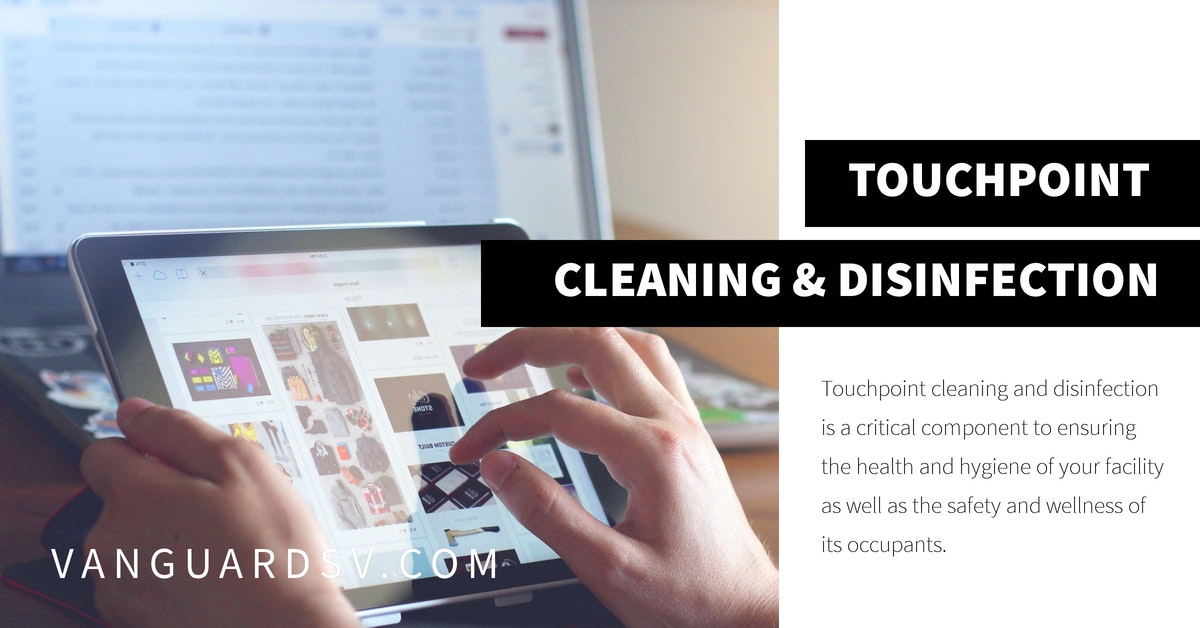Touchpoint cleaning and disinfection is a critical component to ensuring the health and hygiene of your facility, as well as the safety and wellness of its occupants.

Touchpoint Cleaning and Disinfection for Safer Facilities
What is the most contaminated filthy area of your facility?
Hint: it's not the toilet in your restroom.
Most people are surprised and sometimes appalled at the truth that lies on the surface of everyday objects they touch and use each day.
Objects such as:
- Light switches.
- Keyboards.
- Mice.
- Phones.
- Tablets, and;
- Elevator, vending machine, and water fountain buttons
contain measurably higher counts of bacteria colony forming units (CFU's) than all but the most neglected toilets and urinals, and are responsible for approximately 80% of common germ transmission, but they're not the worst.
A BC Centre for Disease Control study says 80 percent of infections come from items people touch every day.
Keys and money are known culprits, but rising in the infection rank are personal cell phones.
According to Dr. Charles Gerba, microbiologist from the University of Arizona, surfaces in daycare centers, playgrounds, and bus travel centers harbor some of the highest levels of contaminated surfaces.
Offices and healthcare settings, because they are cleaned more frequently, harbor less than one-third of the bacterias found in daycares.
In fact, the surfaces within an office found to be contaminated aren't what most people would think.
The toilet, according to Gerba, is relatively clean.
It only harbors almost 50 germs per square inch.
This is compared to employee phones and keyboards that harbor roughly 25,000 and 21,000 germs per square inch, respectively.
Touchpoint Cleaning Tips
The first step in addressing the challenges of touchpoint cleaning and disinfection is to identify high-contact surfaces throughout your facility.
These will be areas where people congregate, as well as surfaces along the path of high volumes of foot traffic.
Due to office eating habits, the two most significant areas of concern are worker desks and breakrooms.
Experiments show that breakrooms in commercial buildings, offices, schools and hospitals are breeding grounds for infectious germs.
As a result, janitorial staffs in these facilities should focus more attention than they typically do on disinfecting commonly touched surfaces such as coffee pot and refrigerator handles, countertops and tables in these areas.
Another effective method of touchpoint identification, though lacking in subtlety, is to pull out a notepad and record the surfaces most commonly touched by facility occupants as they work and travel throughout the building.
The more an object is touched, the more germs and bacteria are likely present, and the more it needs to be cleaned throughout the day.
For facilities with a continuous flow of foot traffic throughout the day, assigning a day porter to high traffic zones has proven effective at reducing the presence of surface pathogens.
Areas, such as breakrooms and restrooms in schools, which tend to spike at specific times of the day, can usually benefit from scheduled wipe downs during the day.
A best practice for desks and employee desktop equipment is to allow the occupant to wipe the surfaces down throughout the day.
Additional best practices for touchpoint cleaning and disinfection include:
- Weekly deep cleans and no-touch disinfection provided by the custodial staff, typically after hours.
- Regular wipe downs with an EPA-registered medical-grade disinfectant wipe by a trained staff member several times per day, in accordance with foot traffic, occupancy, and use, and;
- End of the day, general cleaning services for high-traffic zones, especially restrooms and breakrooms, where germs and bacteria accumulate rapidly.
Hand Hygiene
Occupant hand hygiene is a critical component of effective touchpoint cleaning and disinfection programs--so much so that one is pointless without the other.
Per the U.S. Centers for Disease Control and Prevention, occupants should wash their hands;
- Prior to eating.
- After using the restroom, and;
- After coming into contact with a likely contaminated surface or contagious person.
The recommended guidelines for hand safety are as follows:
- Rinse your hands with clean running water.
- Apply soap and scrub your hands thoroughly for at least twenty seconds.
- Rinse hands with clean running water.
- Dry hands with clean paper towels.
- Apply hand sanitizer after exiting the restroom, and whenever hand sanitation is required but soap is not available.
References & Resources
- Hands Off: Touchpoint Cleaning to Prevent Disease
- Dangerous amounts of bacteria found on everyday items
- Tests That Identify Successes When Cleaning Touch-Points
Takeaway
Enhanced touchpoint cleaning and disinfection combined with basic hand hygiene are crucial elements for ensuring the health and safety of everyone.
Outsourcing to an experienced service provider will ensure your organization can rapidly onboard these critical services without the time and training typically necessary to get key resources up to speed.
If you would like more information regarding the effectiveness of high-performance infection prevention and control measures, or if you would like to schedule a free, no-obligation onsite assessment of your facility's custodial needs, contact us today for a free quote!
In Bakersfield CA, call (661) 437-3253
In Fresno CA, call (559) 206-1059
In Valencia CA, or Santa Clarita CA, call (661) 437-3253
In Palmdale CA, or Lancaster CA, call (661) 371-4756

